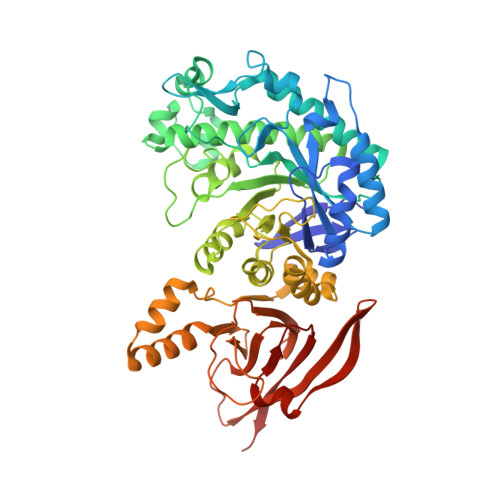A Complex Gene Locus Enables Xyloglucan Utilization in the Model Saprophyte Cellvibrio Japonicus.
Larsbrink, J., Thompson, A.J., Lundqvist, M., Gardner, J.G., Davies, G.J., Brumer, H.(2014) Mol Microbiol 94: 418
- PubMed: 25171165
- DOI: https://doi.org/10.1111/mmi.12776
- Primary Citation of Related Structures:
4D1I, 4D1J - PubMed Abstract:
The degradation of plant biomass by saprophytes is an ecologically important part of the global carbon cycle, which has also inspired a vast diversity of industrial enzyme applications. The xyloglucans (XyGs) constitute a family of ubiquitous and abundant plant cell wall polysaccharides, yet the enzymology of XyG saccharification is poorly studied. Here, we present the identification and molecular characterization of a complex genetic locus that is required for xyloglucan utilization by the model saprophyte Cellvibrio japonicus. In harness, transcriptomics, reverse genetics, enzyme kinetics, and structural biology indicate that the encoded cohort of an α-xylosidase, a β-galactosidase, and an α-l-fucosidase is specifically adapted for efficient, concerted saccharification of dicot (fucogalacto)xyloglucan oligosaccharides following import into the periplasm via an associated TonB-dependent receptor. The data support a biological model of xyloglucan degradation by C. japonicus with striking similarities - and notable differences - to the complex polysaccharide utilization loci of the Bacteroidetes.
- Division of Glycoscience, School of Biotechnology, Royal Institute of Technology (KTH), AlbaNova University Centre, 106 91, Stockholm, Sweden.
Organizational Affiliation:


















